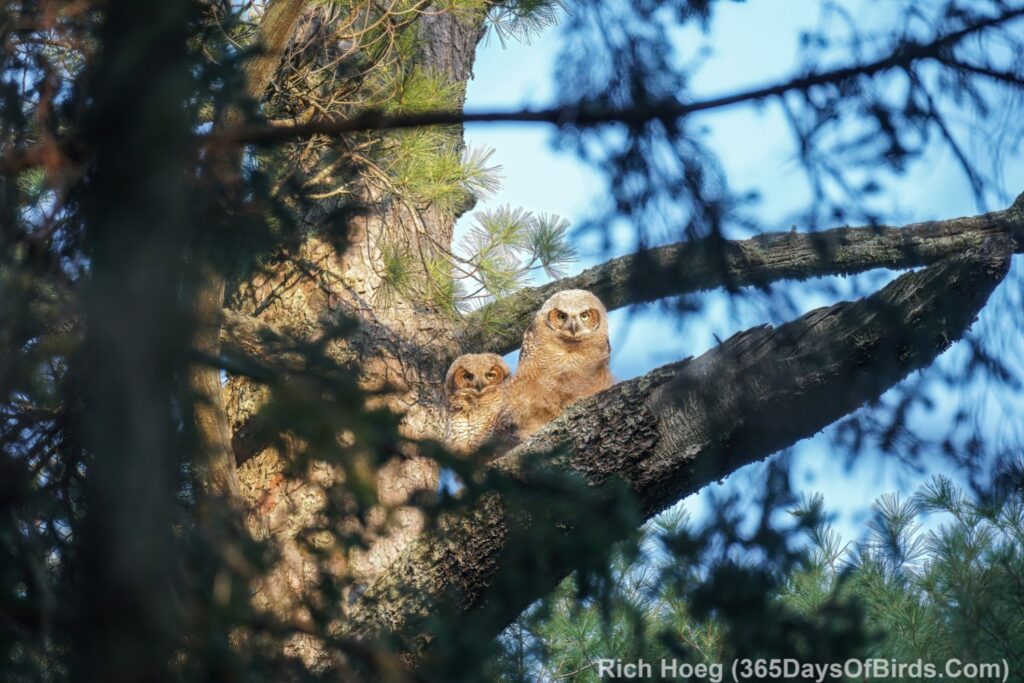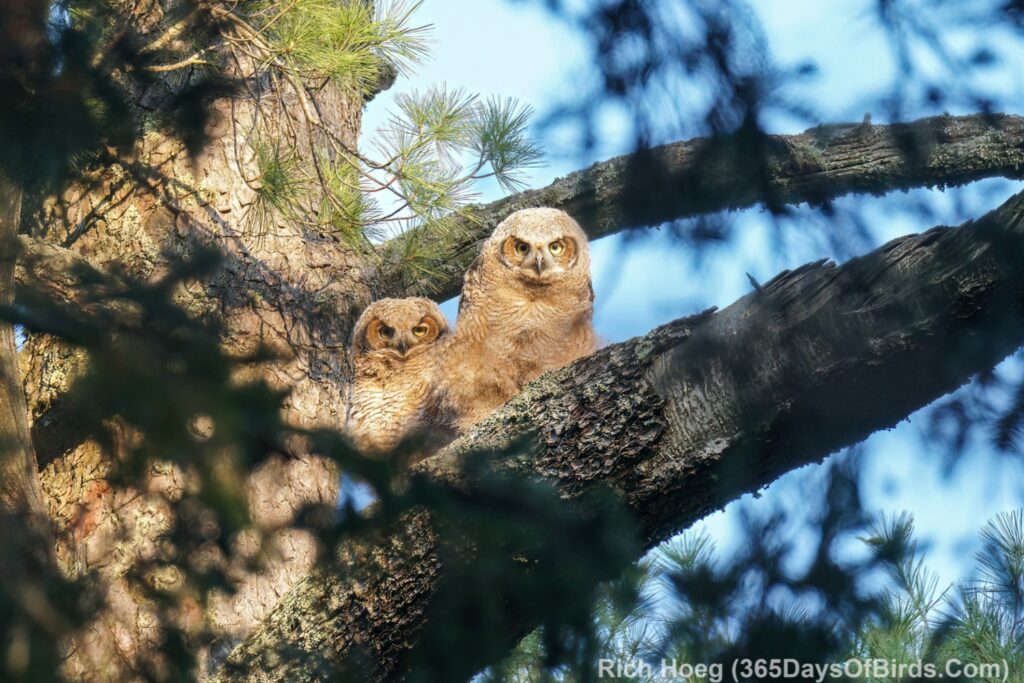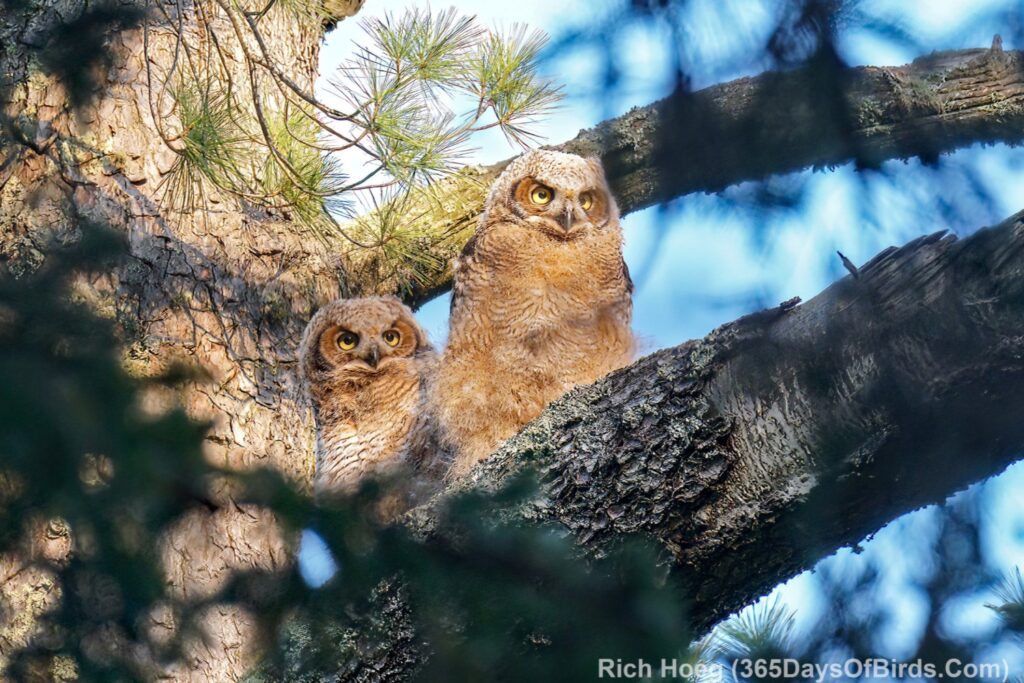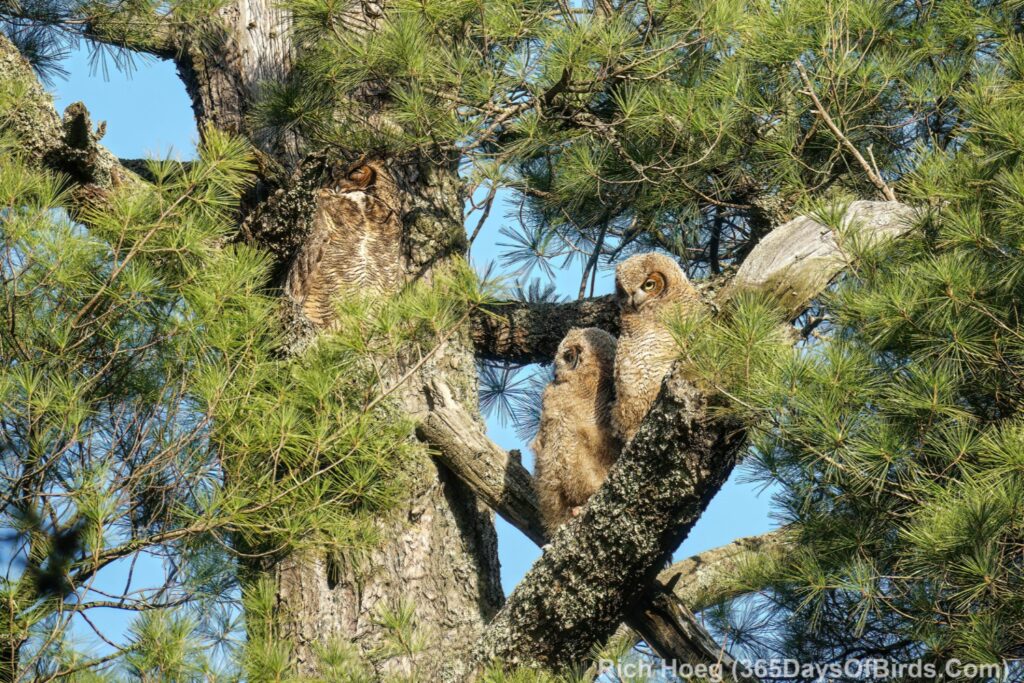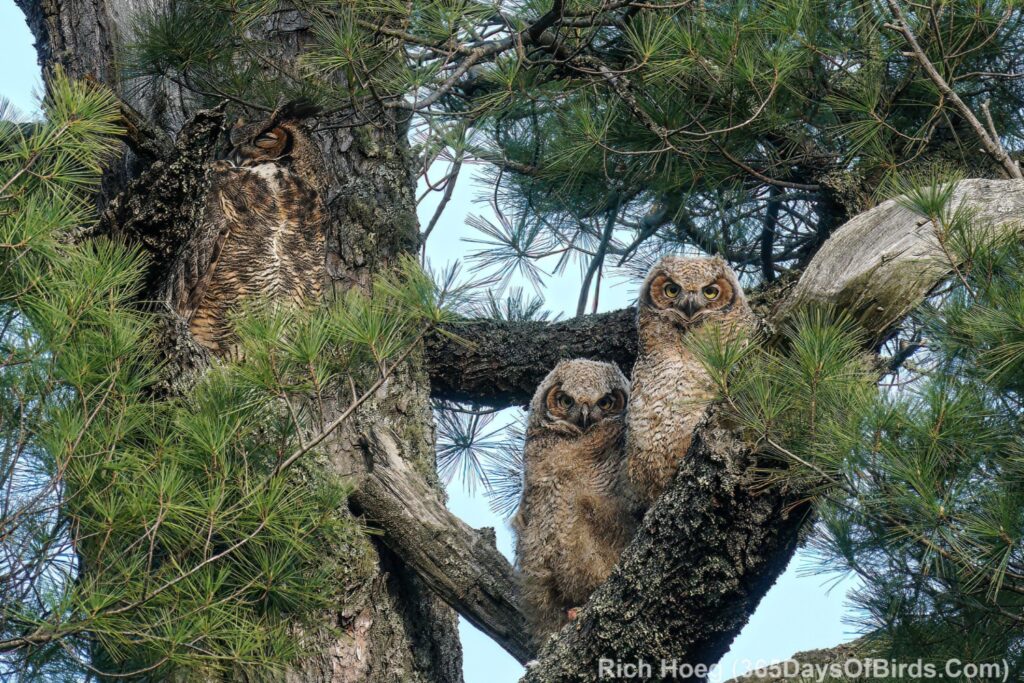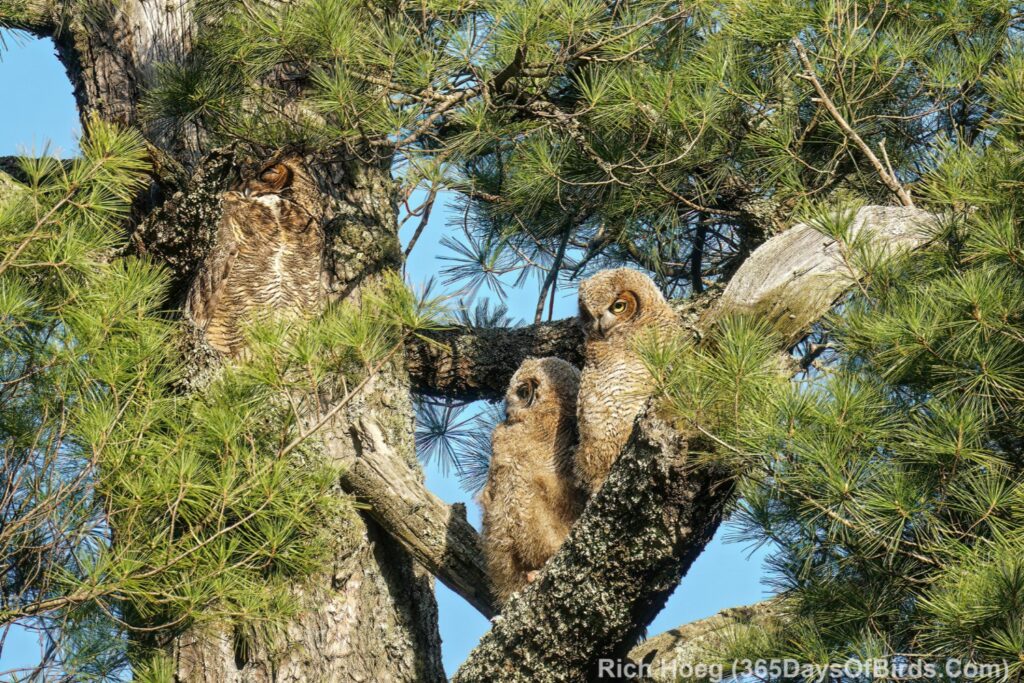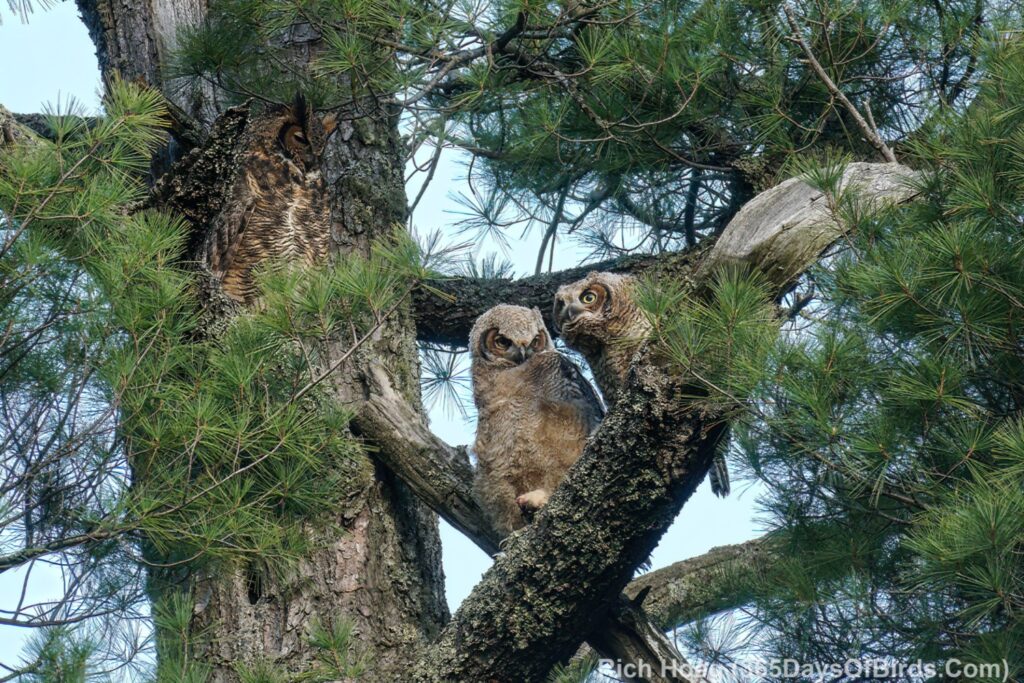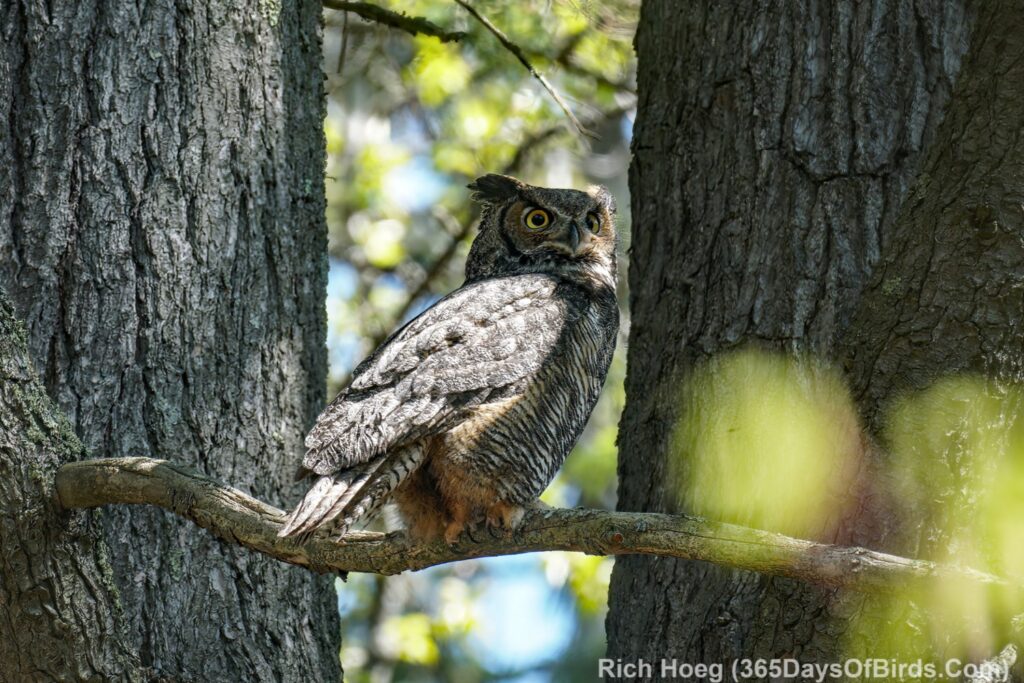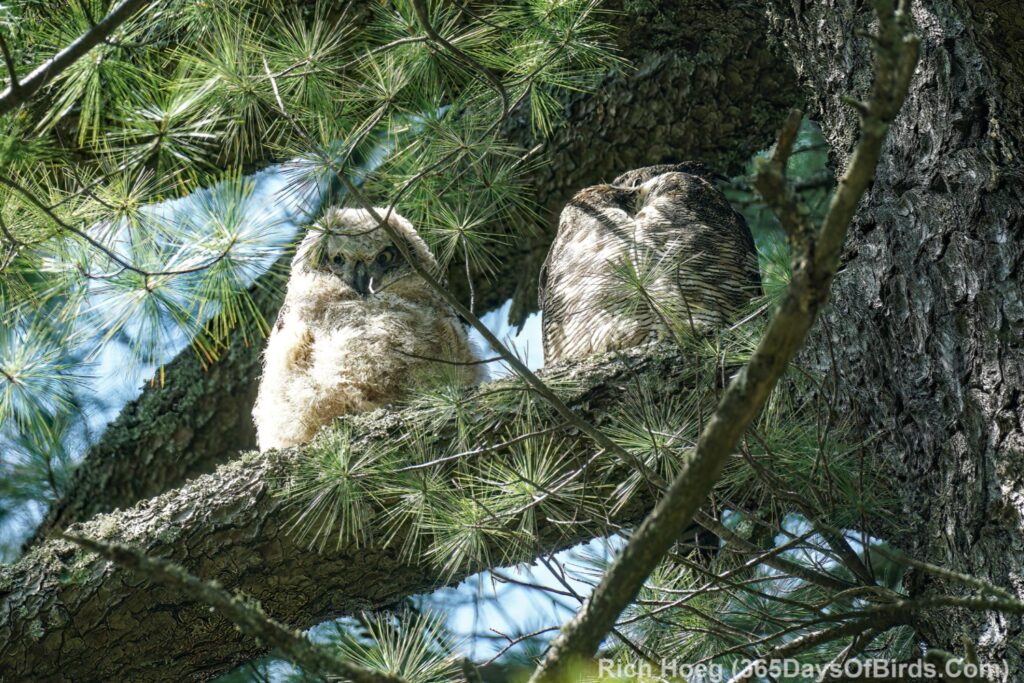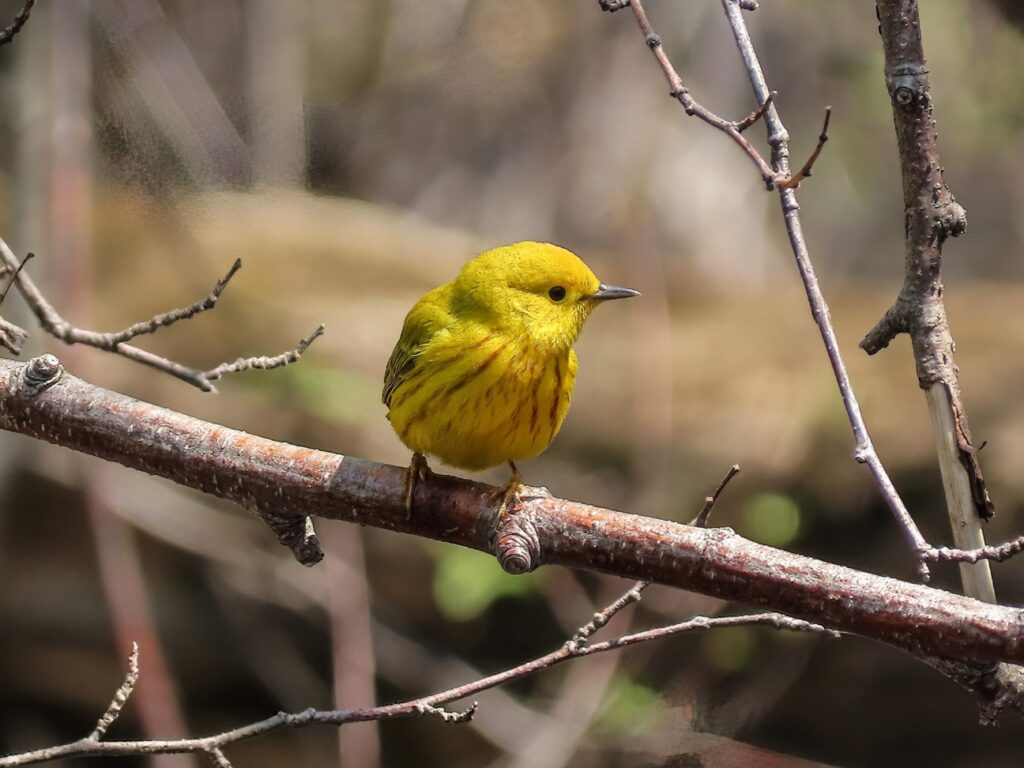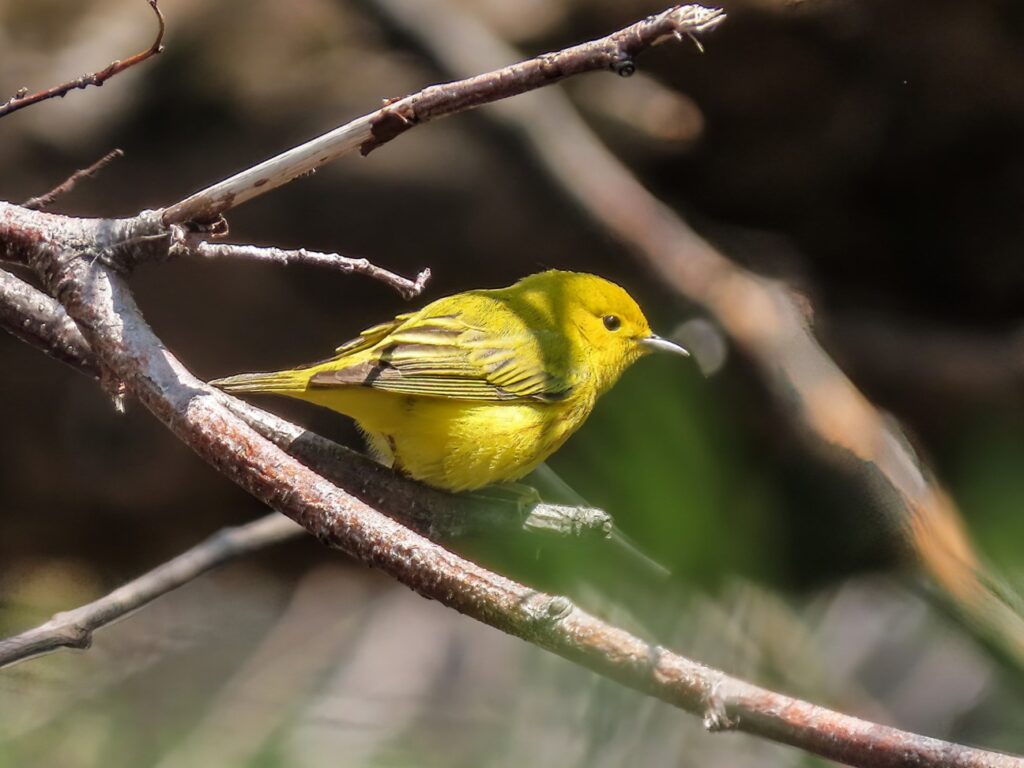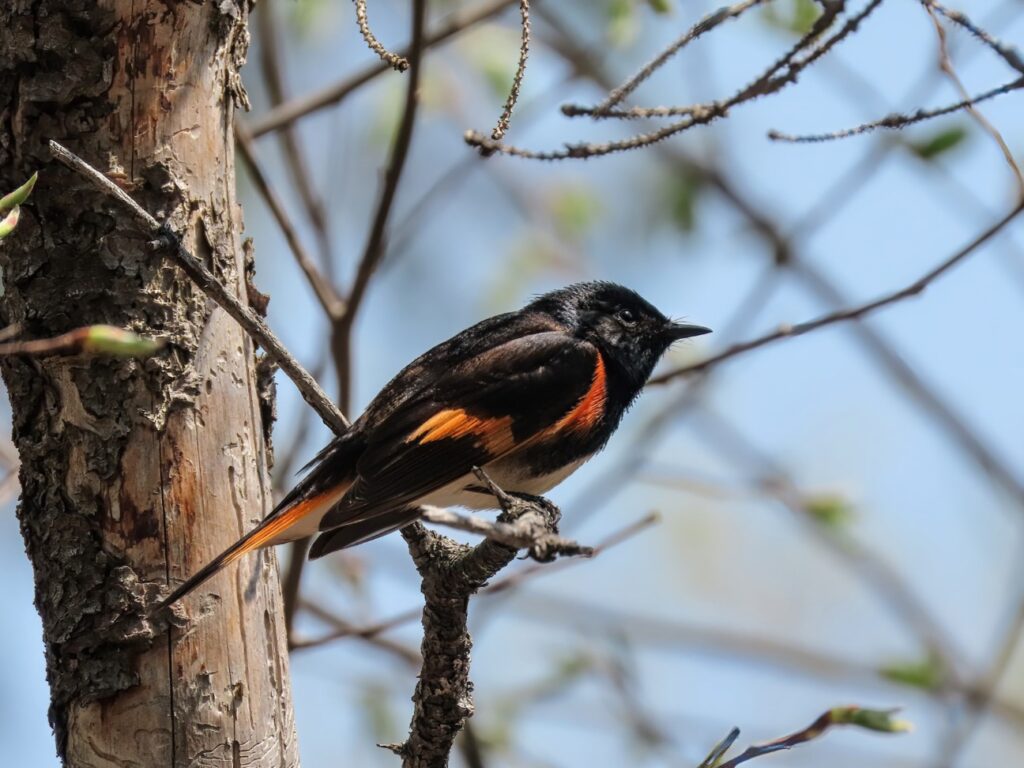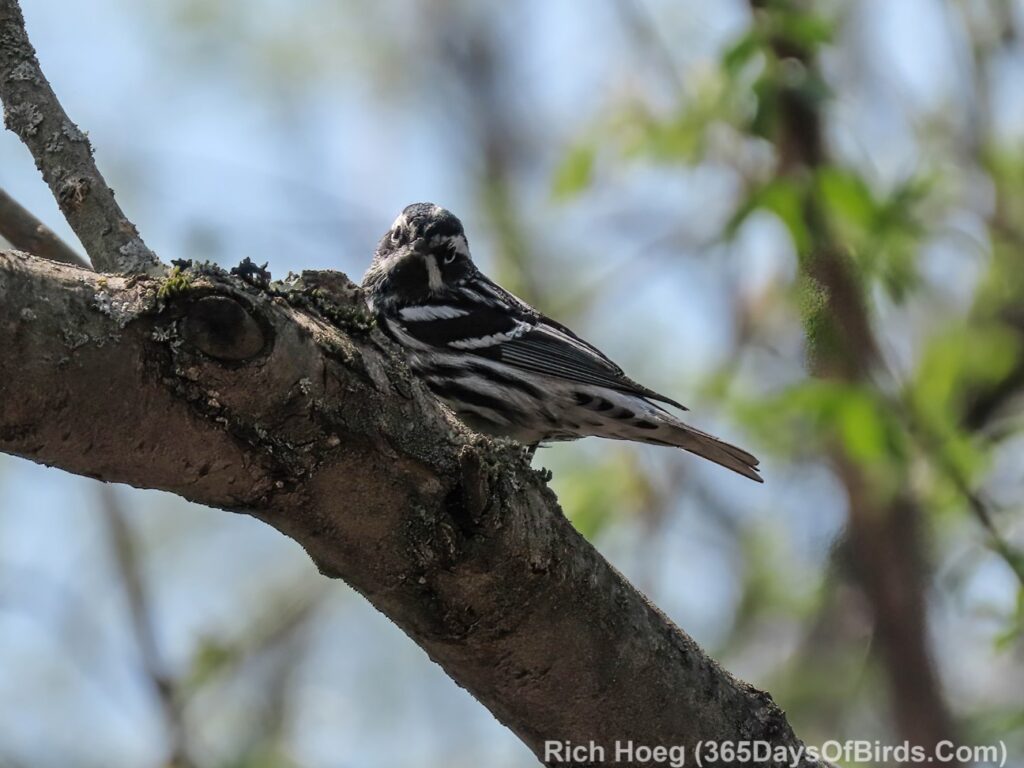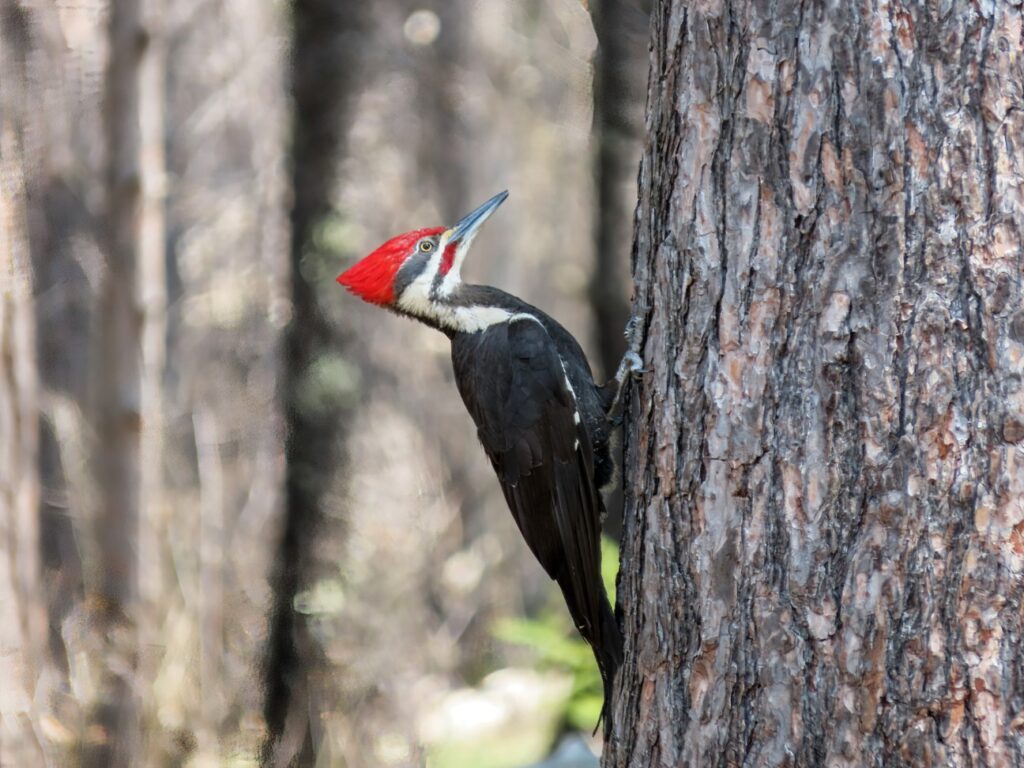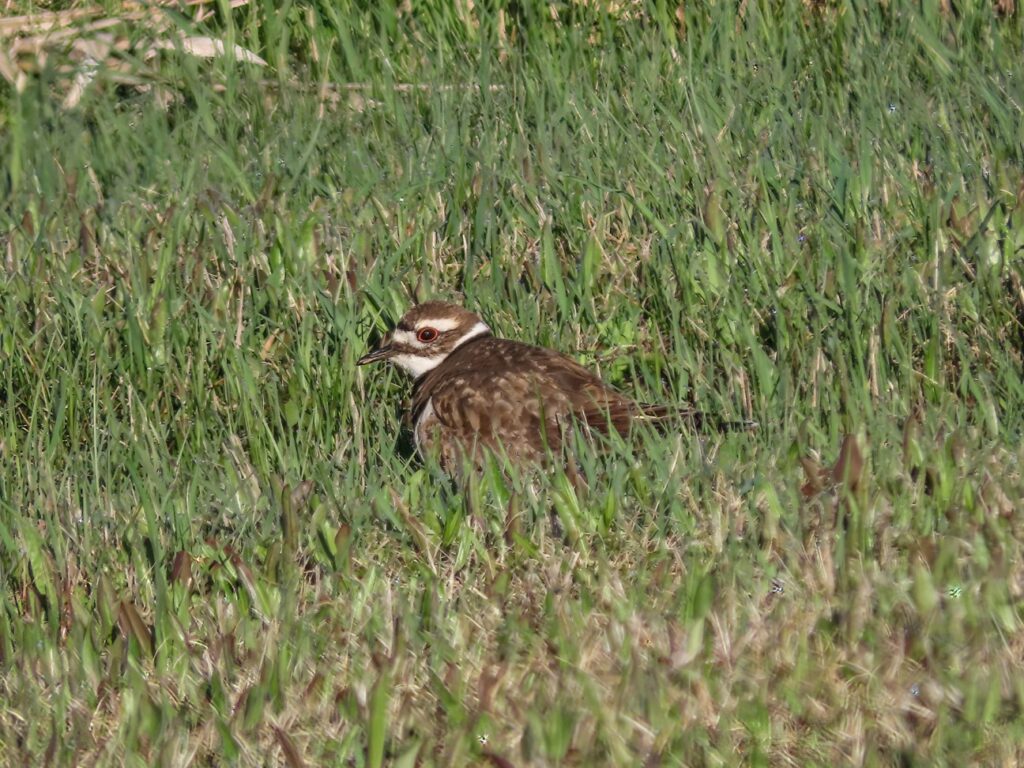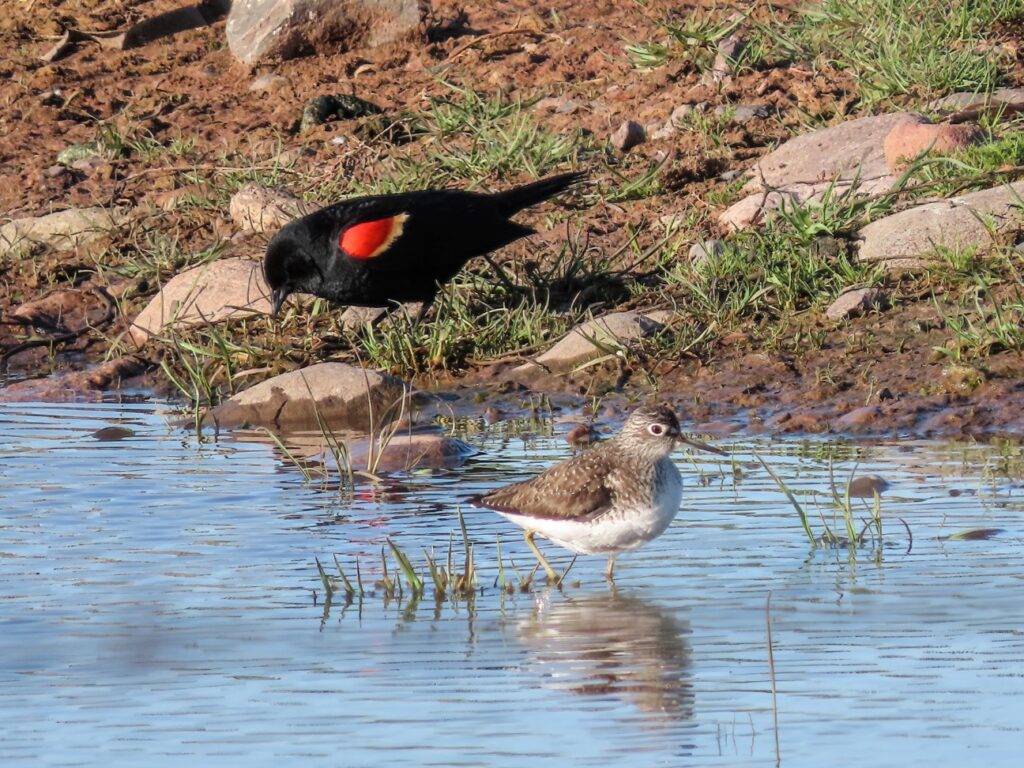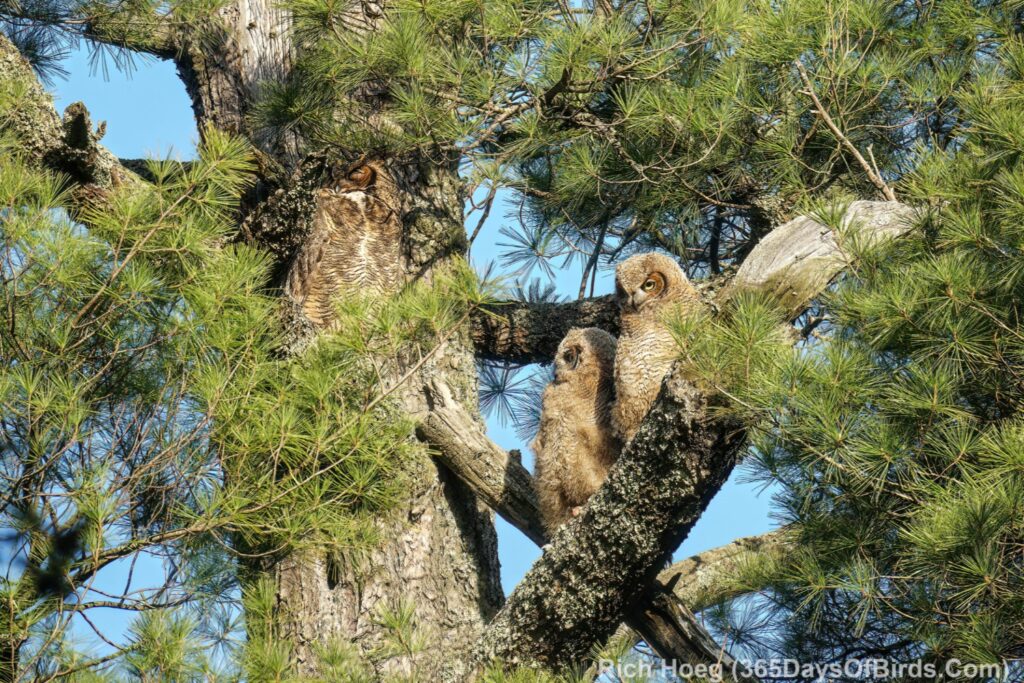The Great Horned Owlets (and their parents) have now moved quite a distance from the nest. I have to search hard to find the owl family, and I am not always successful. The youngsters have become proficient flyers, and with that hunting lessons are now beginning. In fact, early this morning the owl family visited my yard at 4:30 am. I could hear the parents hooting, and the youngsters begging. The lesson of the morning was … hunt bird feeders! Yup, I know from experience that the Great Horned Owl parents, Les and Amy, very much know about my feeders and hunt them frequently! This lesson needed to be taught to the next generation, but ultimately they will have to find their own feeders!
Here are some images taken from Days 39 to 43 of the owlet’s lives bringing us through this past Monday.
Day 39 (20 Minutes after Sunset)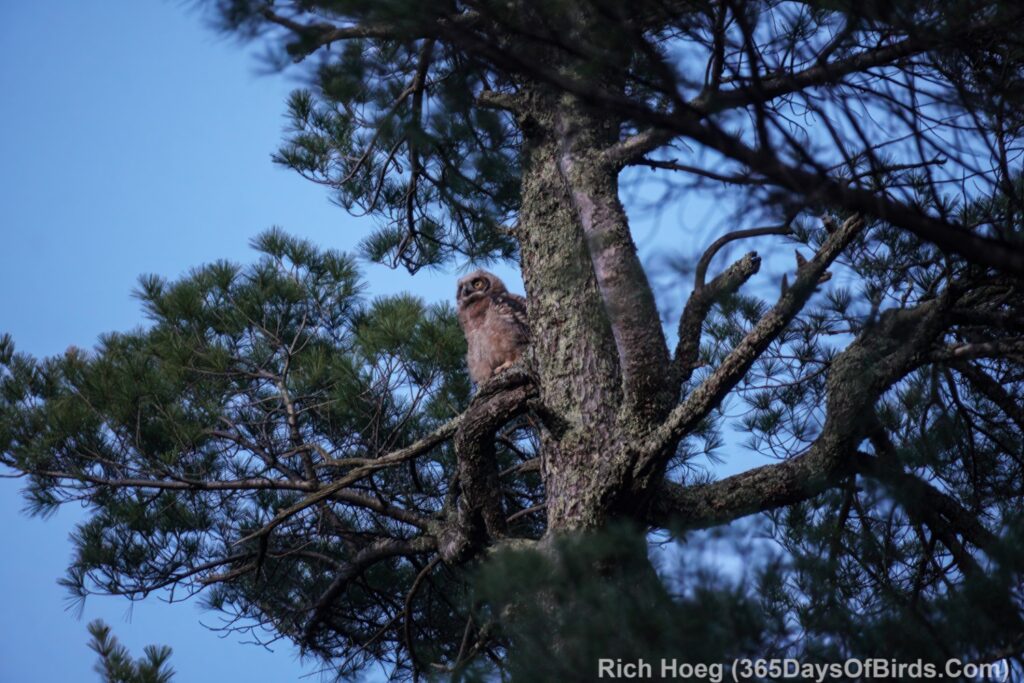
Day 41 (30 minutes before sunset)